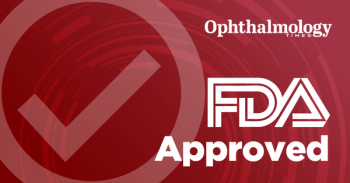
Ranibizumab biosimilar achieves similar results in patients with polypoidal choroidal vasculopathy
Anti-VEGF biosimilars may offer a therapeutic alternative to the original biologic because they have the ability to lower the overall therapeutic cost in the management of varied chorioretinal disorders.
When evaluated to treat polypoidal choroidal vasculopathy (PCV), the ranibizumab biosimilar Razumab (Intas Pharmaceuticals Limited) achieved comparable visual acuity (VA) outcomes to the innovator-ranibizumab molecule (Lucentis, Genentech) and demonstrated an adequate safety profile, according to research by Manoj Soman, MD, and colleagues from Vitreoretinal Services, Chaithanya Eye Hospital and Research Institute, Trivandrum, India.1
“Anti-vascular endothelial growth factor biosimilars are an alluring therapeutic alternative to the original biologic because they have the ability to lower the overall therapeutic cost in the management of varied chorioretinal disorders,” the investigators said.
A comparison
The investigators retrospectively tested the biosimilar drug in real-world conditions in patients with PCV who were treatment-naïve and those who had been treated previously treated for PCV.
The eyes received intravitreal injections of either the biosimilar or innovator-ranibizumab from January 2019 to September 2020. Three loading doses were followed a pro-re-nata regimen. The biosimilar is approved for use in India.
Soman and colleagues evaluated the changes in the best-corrected VA (BCVA), subretinal fluid (SRF), intraretinal fluid (IRF), SRF height, subfoveal choroidal thickness (SFCT), and the safety profile at 12, 24, and 52 weeks.
Twenty-two eyes and 19 eyes, respectively, were treated with innovator-ranibizumab and the biosimilar therapy. The groups were comparable in age and gender; the biosimilar group differed in that significantly more eyes had been treated previously (P < 0.00001) with a greater median number of injections (P < 0.0001), the authors reported.
At week 52, the increases in the BCVA in both groups were similar (P = 0.19) as were the SRF resolution (P = 0.8), IRF resolution (P = 0.47), and SRF height (P = 0.71).
A difference was that the innovator-ranibizumab-treated eyes achieved a significant improvement in BCVA (P = 0.001) at all visits with a greater mean number of injections (innovator ranibizumab, 5.41 ± 0.94; biosimilar, 4 ± 1.45; P = 0.0004). The eyes treated with the biosimilar drug had a similar increase in BCVA, but the increases did not reach significance until week 52.
At week 52, the SFCT decreased significantly in the biosimilar group (P = 0.045). Mild anterior uveitis developed in 1 eye in the biosimilar group and was treated with topical corticosteroids. No other ocular or systemic adverse effects developed in association with either treatment.
In patients with treatment-naive and previously treated PCV, the results at 52 weeks indicated that both drugs had similar efficacy for increasing the VA with comparable fluid resolution (subretinal and intraretinal) and an acceptable safety profile.
“Razumab,” they concluded, “is a regulatory approved ranibizumab biosimilar, and an effective and safe alternative to the branded drug that has the potential to improve the health economics of PCV treatment.”
Having said this, they also pointed out that while the results are encouraging, further prospective studies performed with a diverse patient population are needed to validate the current findings.
Reference
Soman M, Nair I, Sheth JU, Nair U. Innovator versus biosimilar ranibizumab in polypoidal choroidal vasculopathy: real-world evidence. Ophthalmol Ther. 2022;11:1175–1186. https://doi.org/10.1007/s40123-022-00507-w
Newsletter
Don’t miss out—get Ophthalmology Times updates on the latest clinical advancements and expert interviews, straight to your inbox.








































